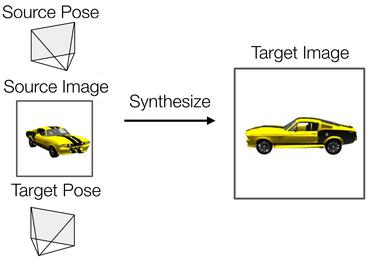Search Results for author: Qingtian Zhu
Found 7 papers, 5 papers with code
RPBG: Towards Robust Neural Point-based Graphics in the Wild
1 code implementation • 9 May 2024 • Qingtian Zhu, Zizhuang Wei, Zhongtian Zheng, Yifan Zhan, Zhuyu Yao, Jiawang Zhang, Kejian Wu, Yinqiang Zheng
Point-based representations have recently gained popularity in novel view synthesis, for their unique advantages, e. g., intuitive geometric representation, simple manipulation, and faster convergence.
KD-MVS: Knowledge Distillation Based Self-supervised Learning for Multi-view Stereo
1 code implementation • 21 Jul 2022 • Yikang Ding, Qingtian Zhu, Xiangyue Liu, Wentao Yuan, Haotian Zhang, Chi Zhang
Supervised multi-view stereo (MVS) methods have achieved remarkable progress in terms of reconstruction quality, but suffer from the challenge of collecting large-scale ground-truth depth.
Sobolev Training for Implicit Neural Representations with Approximated Image Derivatives
1 code implementation • 21 Jul 2022 • Wentao Yuan, Qingtian Zhu, Xiangyue Liu, Yikang Ding, Haotian Zhang, Chi Zhang
Recently, Implicit Neural Representations (INRs) parameterized by neural networks have emerged as a powerful and promising tool to represent different kinds of signals due to its continuous, differentiable properties, showing superiorities to classical discretized representations.
TransMVSNet: Global Context-aware Multi-view Stereo Network with Transformers
1 code implementation • CVPR 2022 • Yikang Ding, Wentao Yuan, Qingtian Zhu, Haotian Zhang, Xiangyue Liu, Yuanjiang Wang, Xiao Liu
We analogize MVS back to its nature of a feature matching task and therefore propose a powerful Feature Matching Transformer (FMT) to leverage intra- (self-) and inter- (cross-) attention to aggregate long-range context information within and across images.
 Ranked #8 on
3D Reconstruction
on DTU
Ranked #8 on
3D Reconstruction
on DTU
MegLoc: A Robust and Accurate Visual Localization Pipeline
no code implementations • 25 Nov 2021 • Shuxue Peng, Zihang He, Haotian Zhang, Ran Yan, Chuting Wang, Qingtian Zhu, Xiao Liu
In this paper, we present a visual localization pipeline, namely MegLoc, for robust and accurate 6-DoF pose estimation under varying scenarios, including indoor and outdoor scenes, different time across a day, different seasons across a year, and even across years.
AA-RMVSNet: Adaptive Aggregation Recurrent Multi-view Stereo Network
1 code implementation • ICCV 2021 • Zizhuang Wei, Qingtian Zhu, Chen Min, Yisong Chen, Guoping Wang
To overcome the difficulty of varying occlusion in complex scenes, we propose an inter-view cost volume aggregation module for adaptive pixel-wise view aggregation, which is able to preserve better-matched pairs among all views.
 Ranked #10 on
Point Clouds
on Tanks and Temples
(Mean F1 (Intermediate) metric)
Ranked #10 on
Point Clouds
on Tanks and Temples
(Mean F1 (Intermediate) metric)
Deep Learning for Multi-View Stereo via Plane Sweep: A Survey
no code implementations • 18 Jun 2021 • Qingtian Zhu, Chen Min, Zizhuang Wei, Yisong Chen, Guoping Wang
3D reconstruction has lately attracted increasing attention due to its wide application in many areas, such as autonomous driving, robotics and virtual reality.





